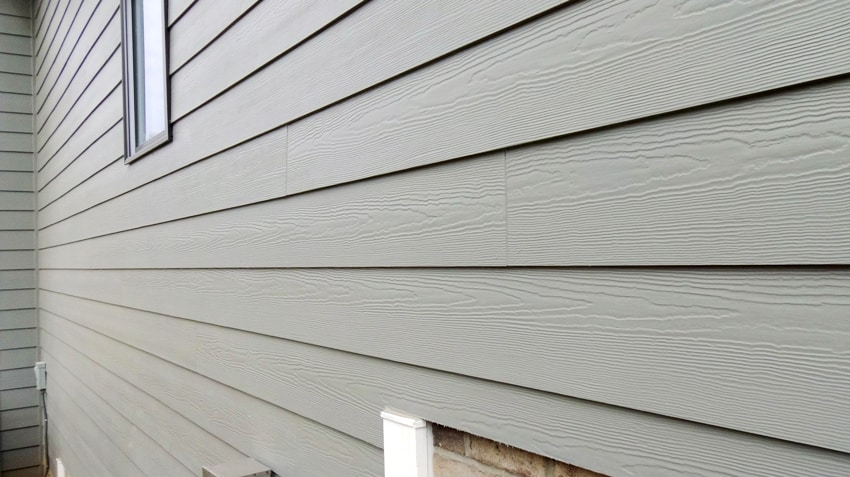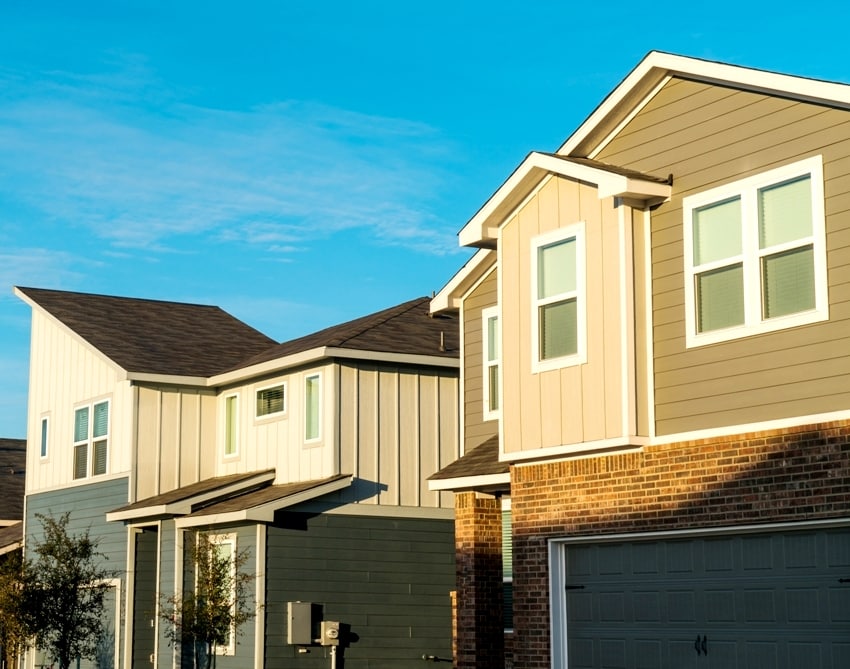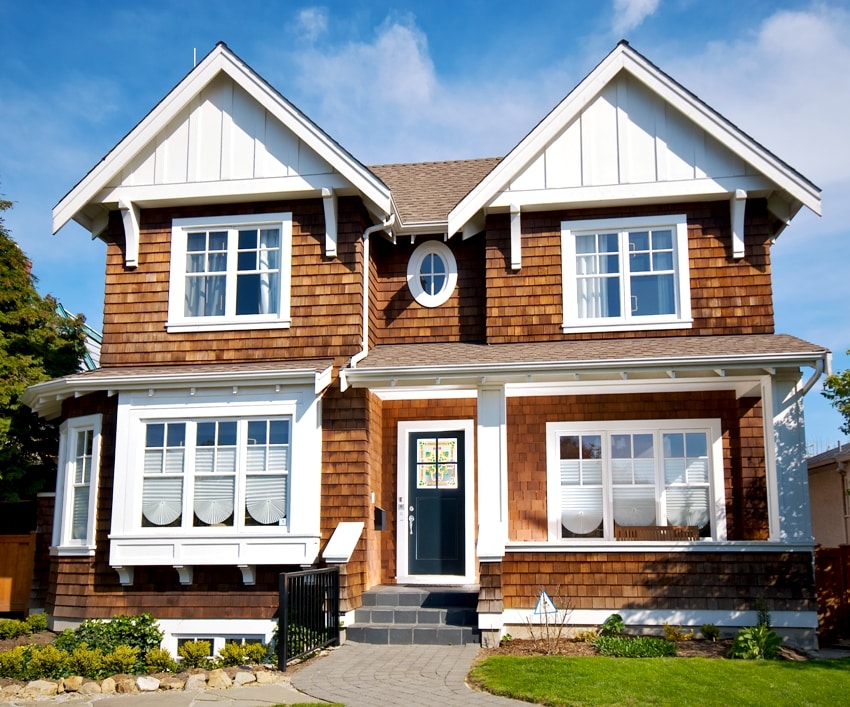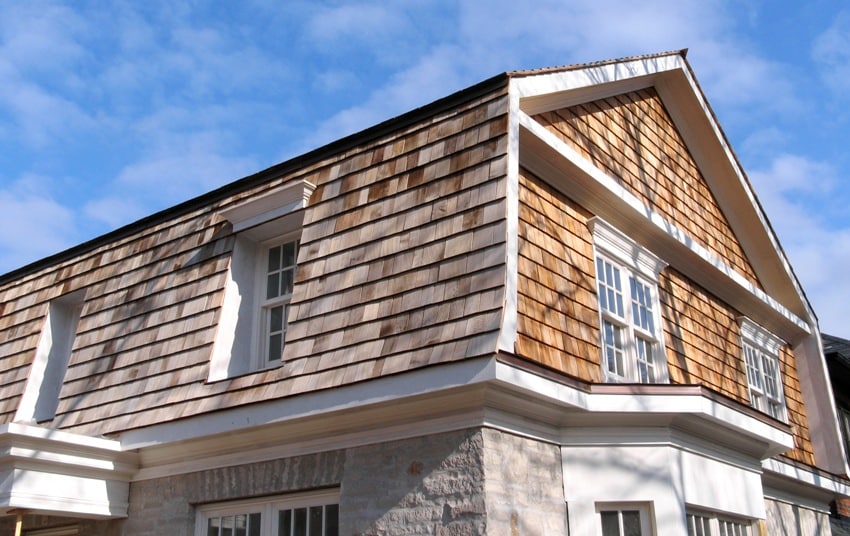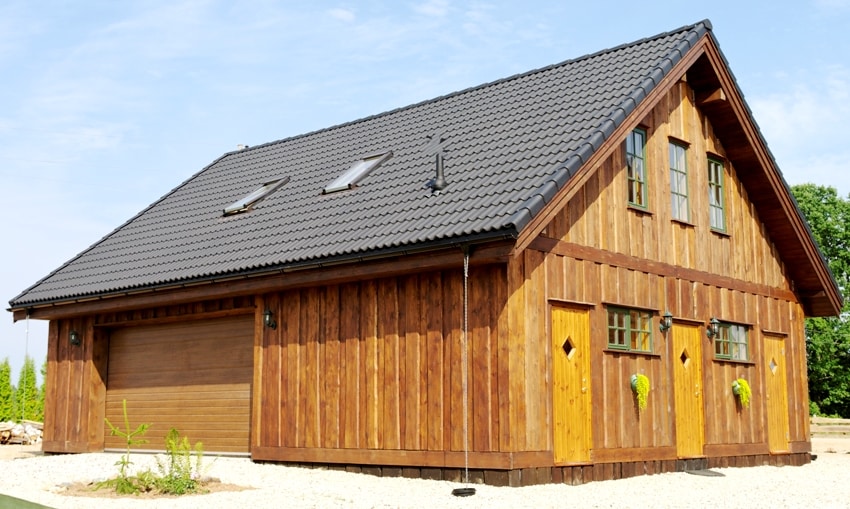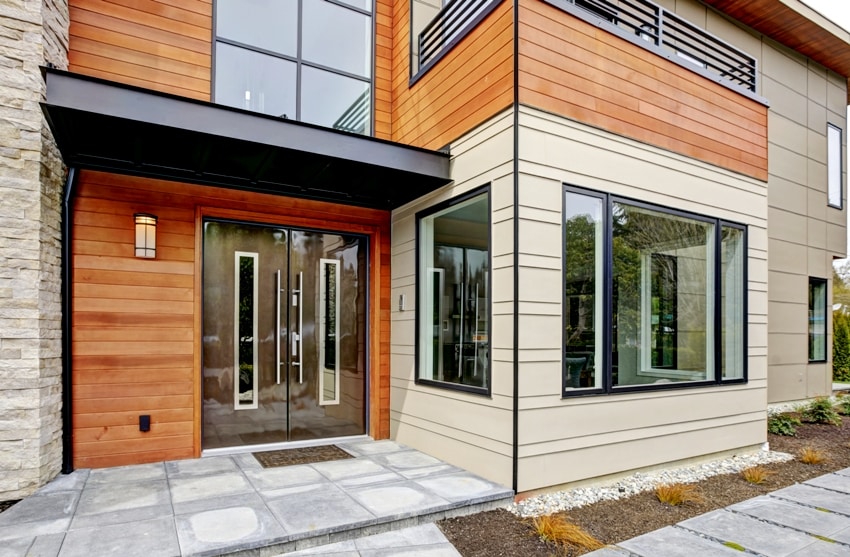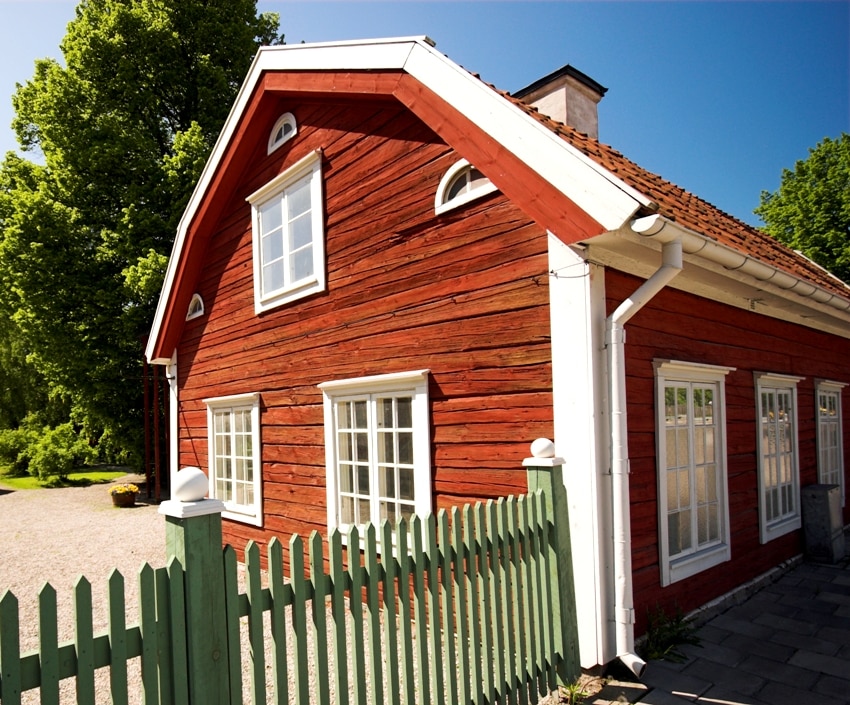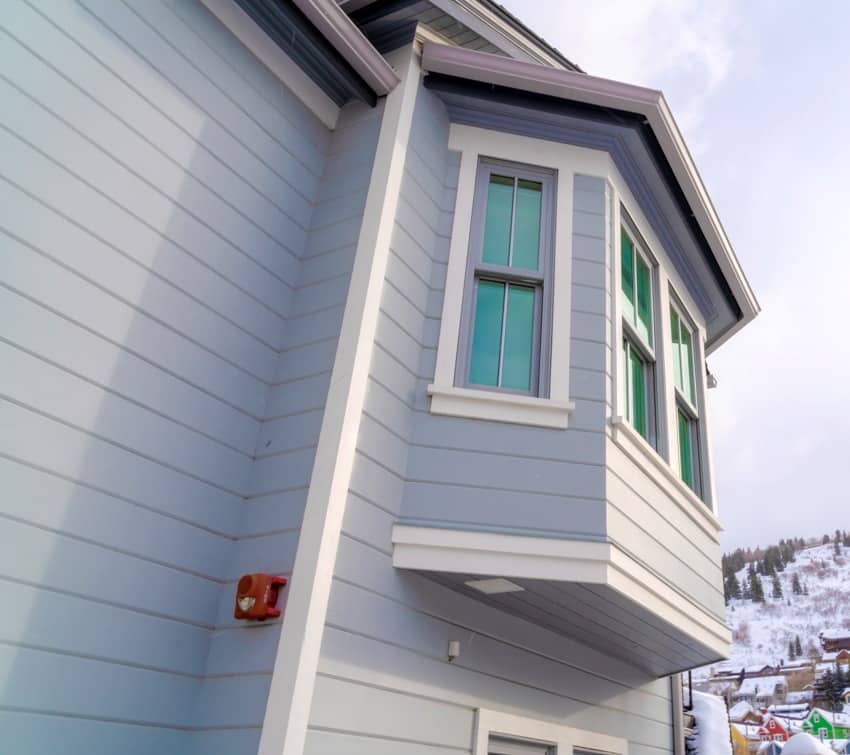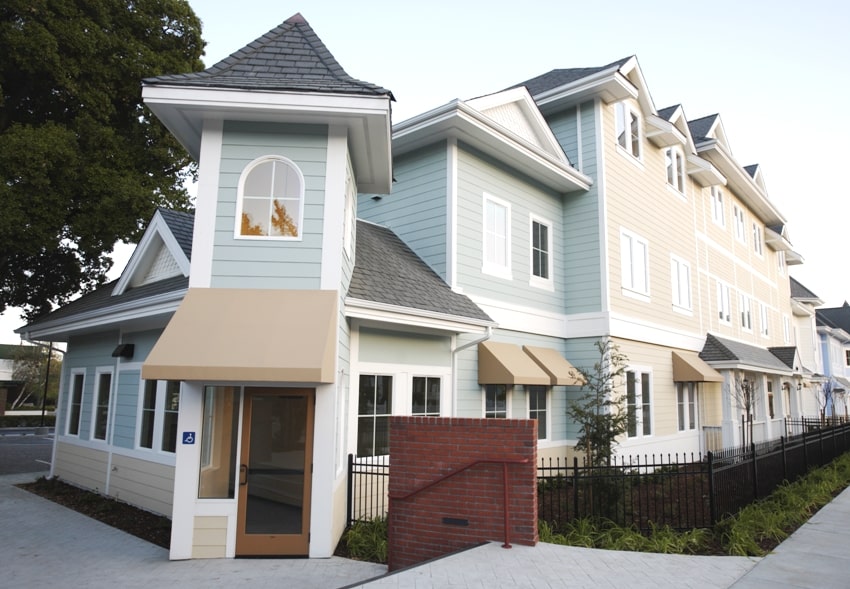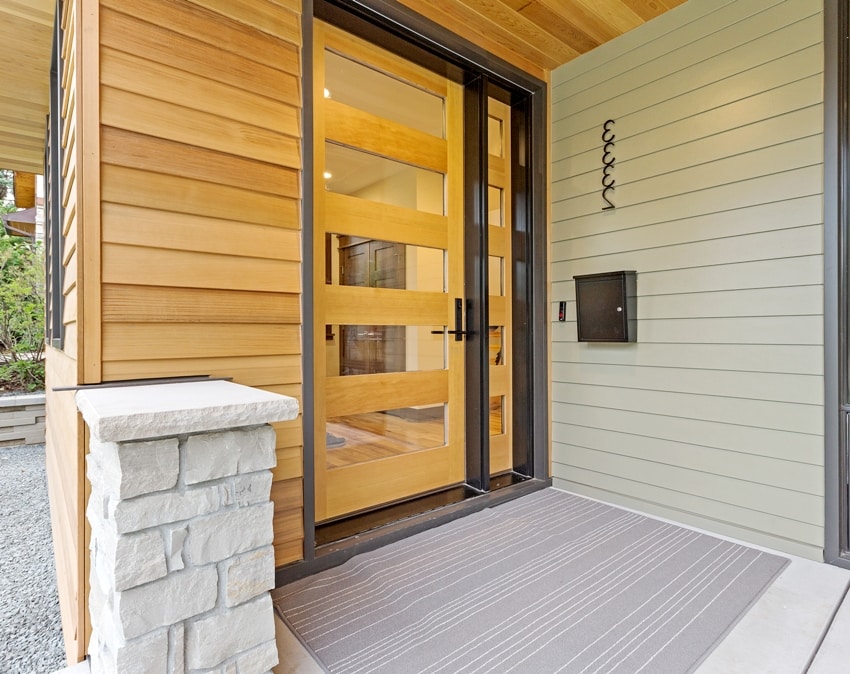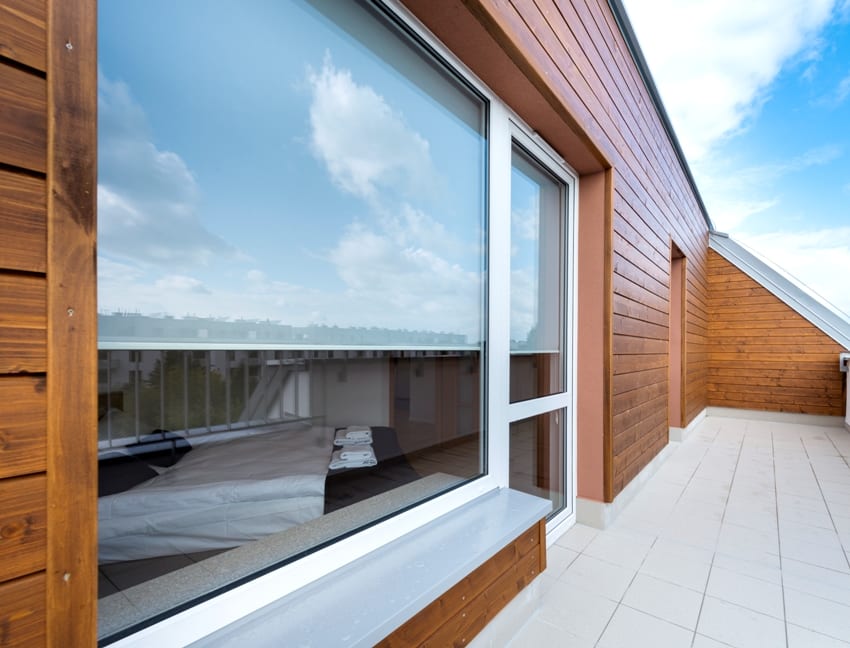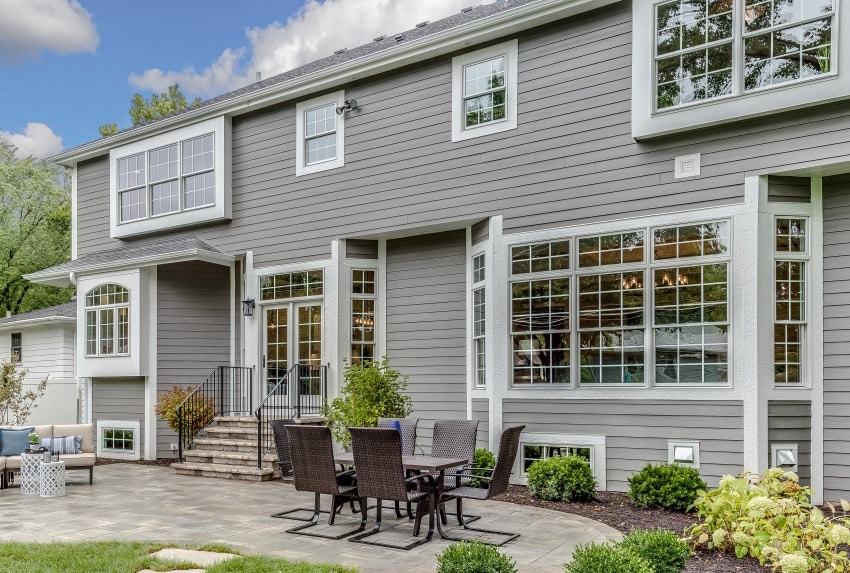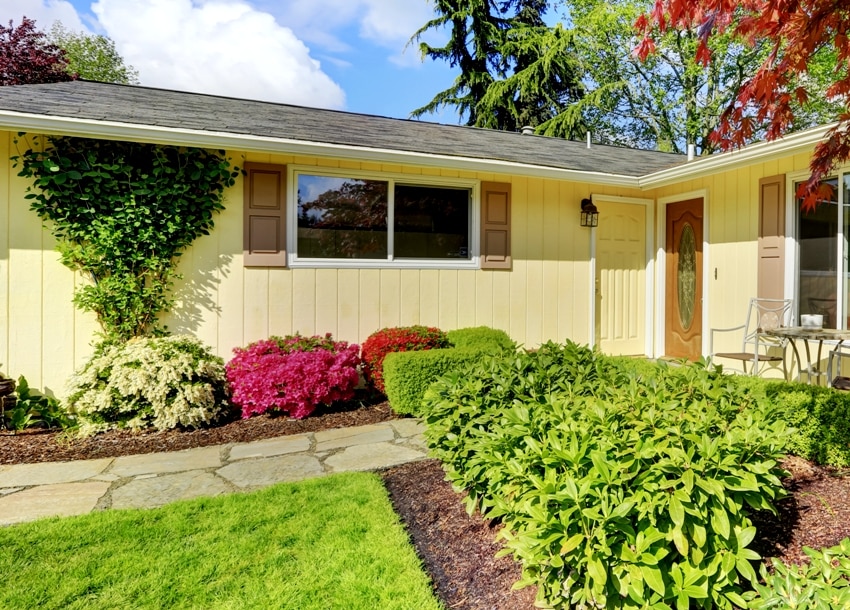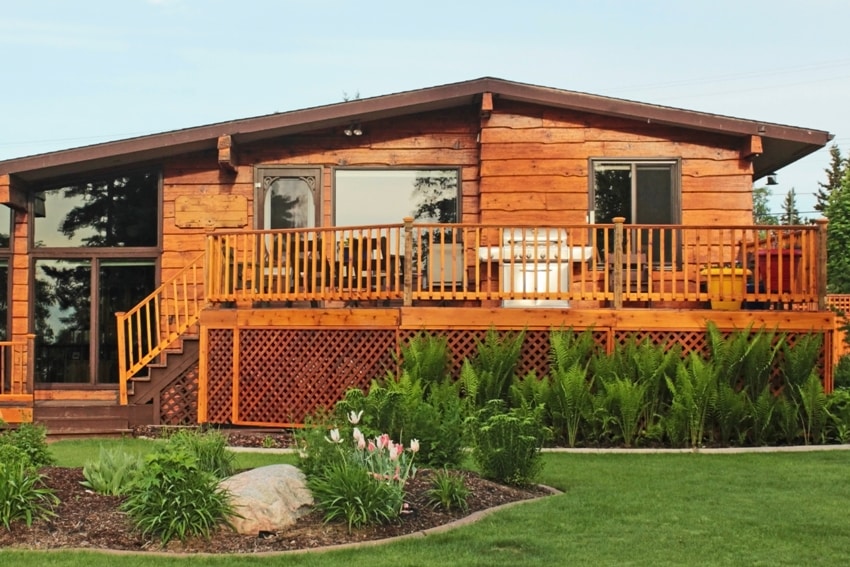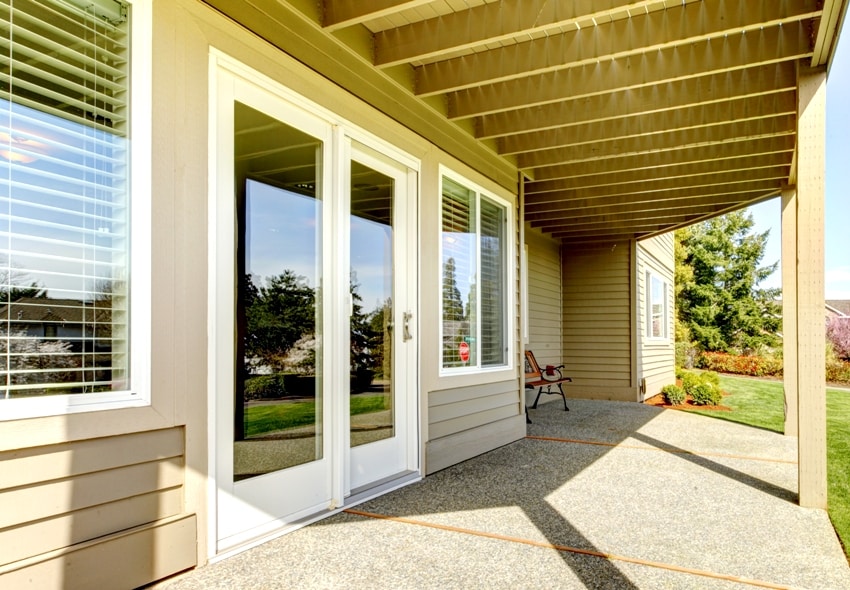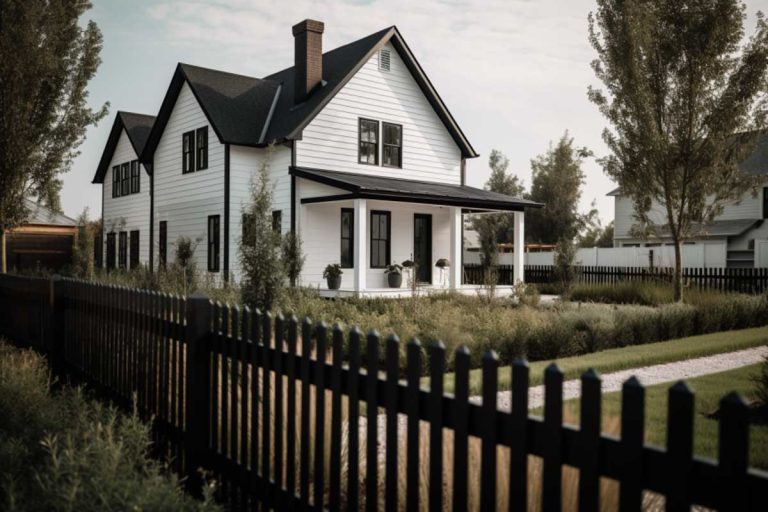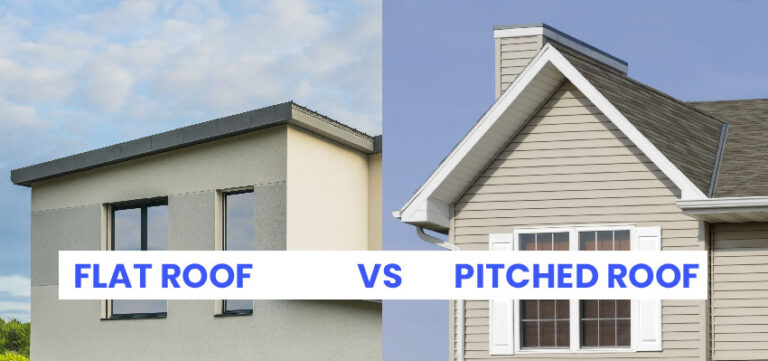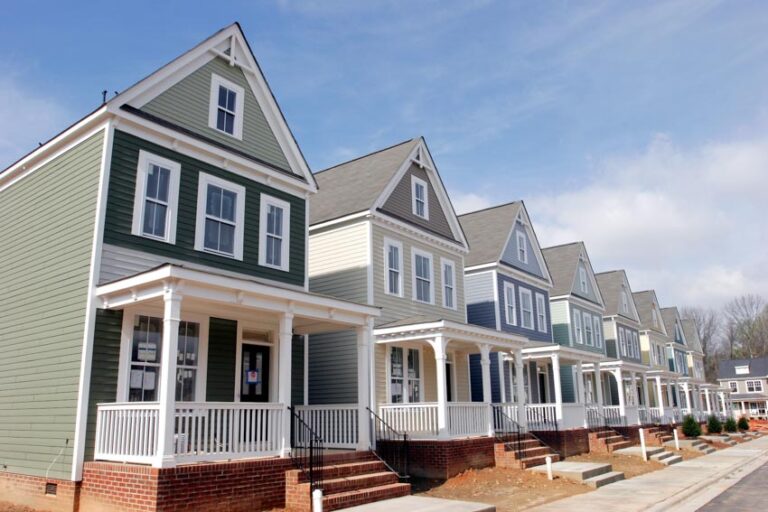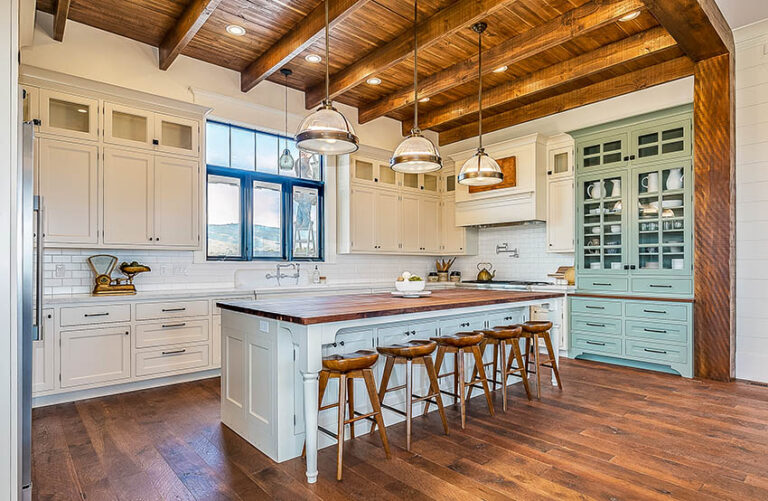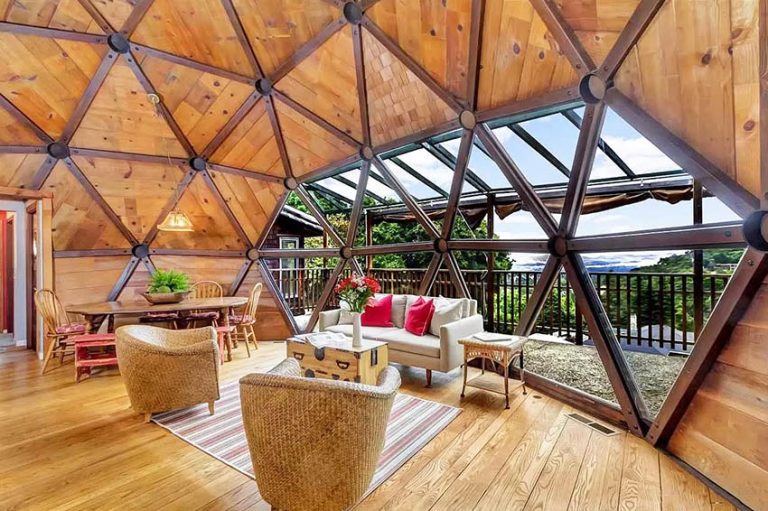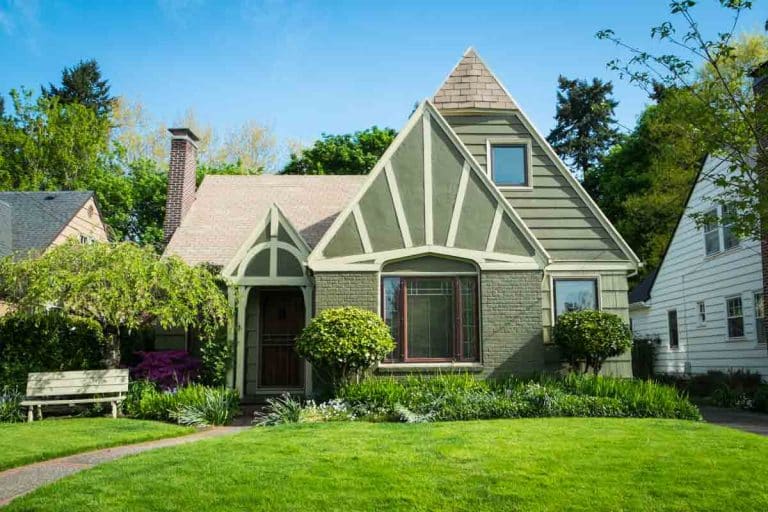Exterior Shiplap Siding (House Design Guide)
Shiplap siding has been used for some time for both interior and exterior walls. It uses long planks that fit together with a tongue and groove process. This overlapping plank style is making a comeback with the popularity of modern farmhouse design.
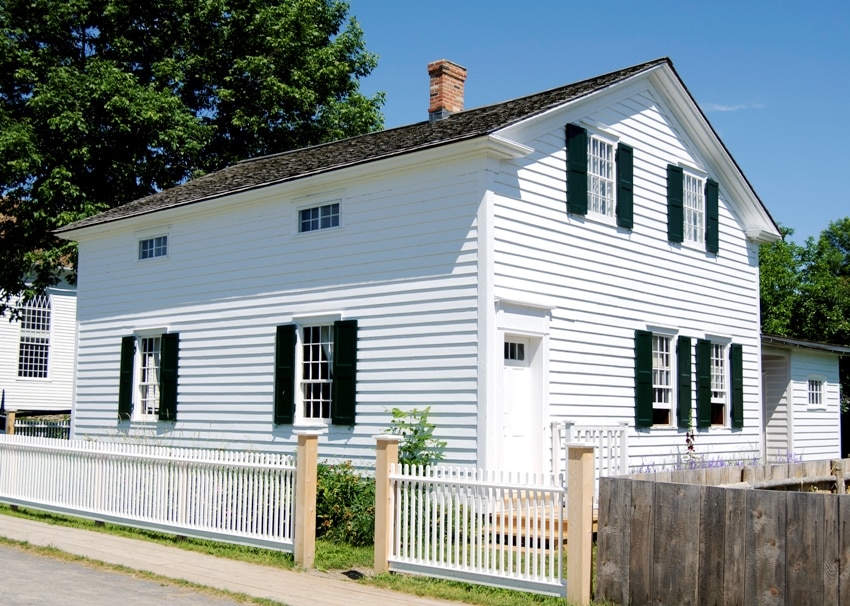
What Is Shiplap Exterior Siding
Shiplap siding refers to a type of wooden siding that is made out of board planks and it can be from any variety of wood. It gets its name from the construction technique used to bring it about.
This technique for construction has been around for a long time. Interestingly, this was even the construction technique of choice for different kinds of boats back then. The most notable one is the Vikings from Scandinavia.
Its colorful history aside, shiplap siding is done by prepping every single wooden plank or board used. Each plank or board is carved with a groove cut on the side of the board. This makes it easy for each plank to overlap with the next one during installation. This overlapping effect will seal in your shiplap sliding pieces.
Your wall surface upon installation is something that is smooth and solid, and there are no creases, so air nor moisture will not be able to enter at all. It is normally designed to be installed horizontally, however, there have been some board planks for shiplap siding projects that have been cut vertically instead.
The thickness of the material can vary depending on the purpose with most exterior cladding measuring 1 1/4 inches. Thicker panels are generally more durable, however, some materials are stronger than others and will be available in thinner profiles.
Types of Exterior Shiplap Siding
Here are the most popular types of material used for shiplap siding.
Shiplap Vinyl Siding
This is also sometimes nicknamed vinyl smooth lap clapboard or traditional vinyl lap siding. It mimics long planks’ aesthetics and is often used for home restorations.
Its overall look and feel are colonial. Shiplap vinyl siding comes in several types:
Horizontal Lap
They run across the house horizontally. They are sometimes also called traditional laps. They come in different textures, and overall, they recreate the look and design of real wood. Among their popular styles are Beaded, Dutch, Log Style, and of course, Traditional.
Vertical Vinyl Siding
They run vertically and are nicknamed “board and batten” sidings. They’re wide boards using a smaller board or batten to seal the space where the two wide boards meet. This makes the wall cladding particularly weather-tight and durable.
Shingle and Shake Vinyl
Redwood and cedar siding, in particular, can be very expensive. This type of vinyl material is a low-cost version of it. This type can give the same stunning aesthetics without the upfront cost and the laborious maintenance of real wood.
Cedar Siding
As far as wood siding is concerned, cedar continues to be the favorite choice compared to all of the other wood types available there. Of course, other types of wood are commonly used , such as redwood, composites, and so on.
However, cedar remains the popular choice for these reasons:
They are shrink-resistant. When properly cured, it will not shrink and leave any gaps or cracks in your siding. It also doesn’t have mixed-in ingredients such as pitched-in wood or resin so you can easily seal and stain the wood with no issues. It has fine-grain aesthetics and a natural and smooth satin finish.
It’s so effortlessly beautiful. Cedar is one of the most beautiful materials you could ever use for your home’s exterior. It has spicy cinnamon-like colors that are warm and lively that try as they might, vinyl and other materials and wood types just can’t come close to. It can come in a variety of textures and can come off looking very stylistic and historic, even.
Pine Shiplap
These boards are made out of extremely versatile pine and are actually bestsellers for homeowners who are a bit on a budget. The popular variant of pine used for these sidings is eastern white pine.
The design look is clean and versatile, and the homeowner or builder can finish off with a stain or keep it as is and have it remain unstained.
Ipe Shiplap
This is considered one of the most durable materials for siding that the market has to offer. It is so durable that it is the material of choice for commercial buildings.
It can stand up to the harsh elements while still being able to maintain its aesthetics as well as its strength. It is all-natural and maintenance-free. Check out ipe wood furniture design guide for more ideas.
The name sounds a little weird, but it basically refers to a type of wood commonly known as “Brazilian walnut”.
Redwood Siding
Redwood is great for siding material because as a staple, it is also quite resistant to shrinkage, so you will not be getting gaps between your boards in the long run. It has an extremely rich texture and warm color that only a few other wood types can attain.
It is naturally decay and pest-proof so it doesn’t rot right away and, with the proper treatments, can last for over 20 years or more.
Hardie Siding
This material is mainly made out of fiber cement. It was a long time coming, but over the years, it has been refined and strengthened. Read more about the fiber cement siding pros and cons guide here.
Aside from the fiber cement, it is also made of other materials such as sand, natural cellulose, and the like. This makes the material environmentally friendly but, at the same time, still offers structurally sound durability.
Fiber Cement
This is often interchangeably used with the Hardie shiplap siding, but they differ. Fiber cement is mostly made out of synthetic materials and, hence, may not be environmentally friendly.
It is, however, fire-proof and can be durable enough to last you for over 50 years or so. Its downsides are that it can be difficult to install, can absorb moisture, and might require more maintenance compared to the other materials.
Composite Siding
This siding material is made of different types of pulp or wafer wood materials pressed together and coated in sealants and resin to ultimately form a board cut and fashioned as panels. They aim to mimic the natural look and feel of wood so that is a plus for curb appeal. Read more about the different exterior wood siding types.
Also, they tend to last for quite a long time, sometimes for 30 years or more. This means that they can be very durable and more weatherproof than other options.
How Much Does Shiplap House Siding Cost?
Shiplap siding costs vary greatly mainly because of the difference in the materials used. Here, we’ll give you a rough estimate of how much it will cost you, including installation fees based on per square footage measurements.
Board/Wood types:
- Hardwood – $2.50 to $3.50 per square foot
- Cedar – $2.50 to $7 per square foot
- Pine – $2.75 to $3.75 per square foot
On top of the main materials, you will need other materials for your shiplap siding installation. These materials are as follows:
- Exterior stain/s
- Exterior caulk
- Finish nails
For exterior shiplap siding, you are going to need a professional. For the interiors, you can attempt to DIY it but unless you’re extremely handy or skilled, it would be best to leave this off to the pros.
Professional labor for a typical shiplap siding job would range at around $3,000 to $5,000, depending on your actual location.
Then there’s the concern of cladding. It’s not always necessary, but it is also sometimes used and is factored in on shiplap siding costs. Cladding refers to the material put on the shiplap boards to prevent any water damage or any other damage it might get from wind, dust, and other elements.
Some shiplap versions require cladding because wood can be a vulnerable material at times, especially when exposed to the outdoors. The contractor usually determines whether or not cladding is required as an additional installation.
Tongue and Groove Siding Cost
If you want to factor in the costs of real wood boards for exterior tongue and groove cladding, the range is comfortable $2.5 to $7 per square foot. For exterior installation, on top of the raw materials for the boards, professional installation can range anywhere from $2,500 up to as much as $7,500 depending on the size of the home.
The factors affecting the cost of getting exterior tongue and groove cladding would depend on your wood board of choice, the actual size of your home, and how much the contractors in your area would typically charge for their professional fees.
Some homeowners are seriously considering the possibility of going down the DIY route, but this isn’t something we recommend unless this is something that you’re quite knowledgeable about. Only professional laborers or contractors would know how to minimize the possibility of the material being damaged efficiently.
The risk of improper underlayment, among other things, is too high a stake to gamble with and you might end up redoing the whole thing and hiring a professional in the long run which will cost you more money, totally defeating the goal of saving up on the installation costs.
Shiplap House Siding Designs
Here are some shiplap siding ideas for the home.
Horizontal Shiplap
This type of shiplap sliding design is achieved when the shiplap boards are arranged and installed horizontally. It’s a modern and more popular design for shiplap.
It can produce an optical illusion and can make the building or the house look wider than it actually is. It can balance out the typical vertical direction of how buildings are normally made.
This is the perfect siding of choice if you’re going for the farmhouse aesthetic. It resembles the look of barn walls and can naturally complement farmhouse or cabin-type rustic designs.
Vertical Shiplap
This design for shiplap installation is less commonly used, but it is also great for creating a vintage and rustic look for the house you’re installing it on. It has a timeless quality in its aesthetics.
Although this isn’t as on-trend compared to the horizontal shiplap siding, this has all the advantages of durability and withstanding the test of time as the shiplap enjoy a much longer lifespan with this. It’s also a great way to trick the eye into giving the exterior of the home a much-heightened look.
If you have a home that’s one story and looks fairly low or short, it can definitely benefit much from the accents coming from vertical shiplap siding.
Rough Sawn Shiplap
This is a somewhat new addition to the tongue and groove cladding design family, but it has been making waves because, in terms of cost savings, it covers 7% more than the usual tongue and groove cladding designs available.
They’re individually hewn with the tongue and groove pattern and enjoy square-edge finishing. This makes the planks easier to install yet natural looking, with a professional touch to their overall finish.
It’s definitely something worth looking into if you want to go for something that isn’t commonly seen in the exterior design market. Some homeowners fancy its rugged yet polished appeal once the installation is complete.
Is Shiplap Good for Home Siding?
The direct answer to this is a big YES. Shiplap is a feature that originated from the design of traditional homes that are built to withstand harsh climates. This is particularly useful if your home happens to be located somewhere that’s forested or coastal.
On top of its current popularity as the accent of choice for the exteriors of the home because it looks good and provides a somewhat aesthetic optical illusion, it also banks heavily on the fact that it can exponentially extend the lifespan of your exterior walls and by extension, your home in general.
For you to make sure that you are getting shiplap that will turn out to be great for your home, you will need to consider three things:
First, identify the quality and material of the boards you will use. Some rough and cheap boards also market themselves as tongue and groove, but keep an eye out for genuine boards that have overlapping and interlocking grooves that fit together, puzzle-like, making it sealed and tight enough to keep the elements out.
Second, you need to understand that maintenance and repairs can be tough work. Because of their interlocking design, replacing rotting parts isn’t all that easy. There may be instances wherein you will need to replace full panels altogether.
And the third tip is that they don’t always have to come as is. You can stain or paint tongue and groove boards to add into your home’s overall aesthetic. If you want to play around with colors, the color wheel dictates your only limits.
For more related ideas, visit the shiplap ceiling design guide for your home.


